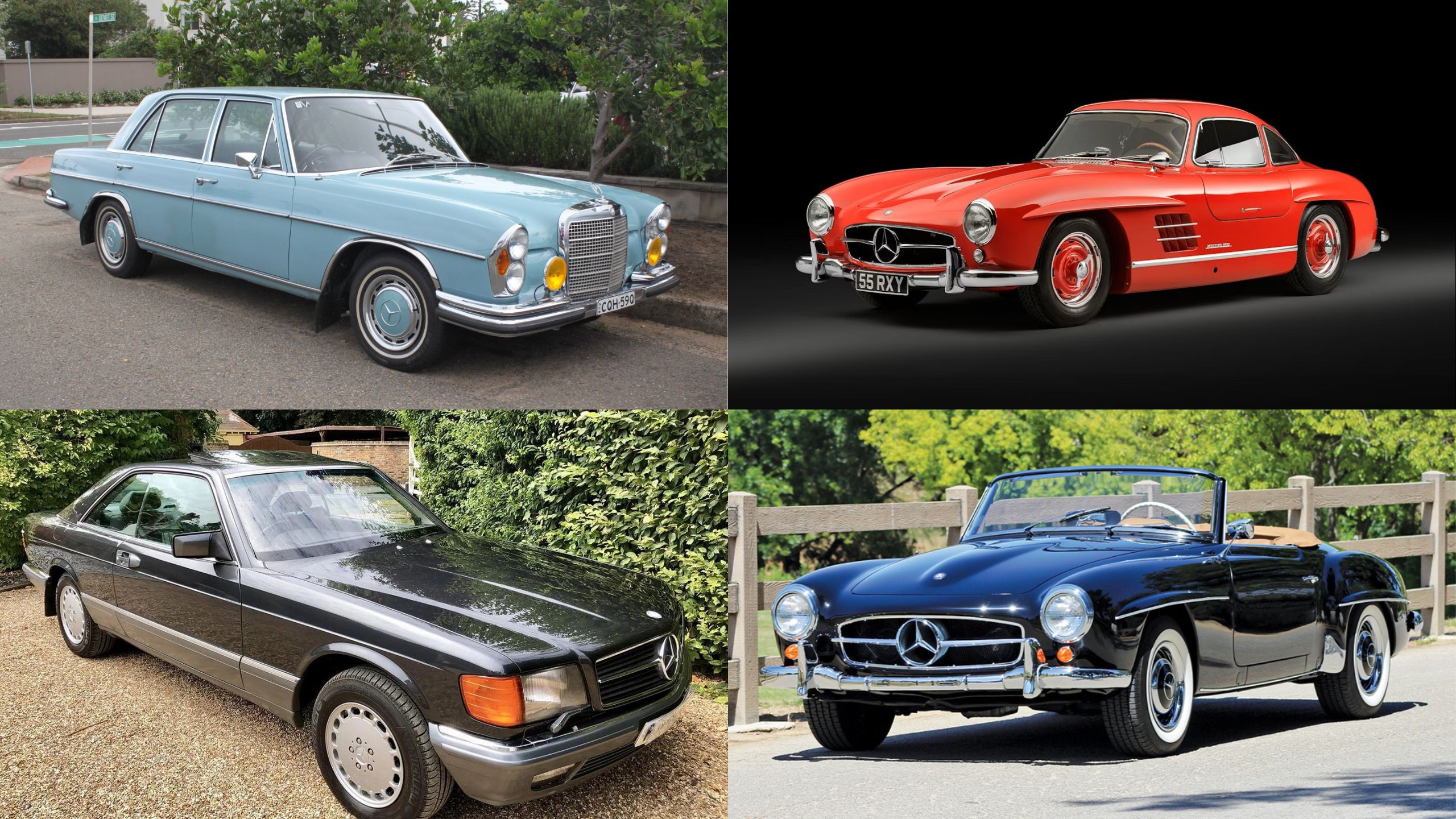In automotive engineering, few manufacturers epitomize durability and timeless craftsmanship quite like Mercedes-Benz. Since its inception, the German automaker has been synonymous with exceptional quality, innovative design, and engineering precision that transcends generations.
While modern vehicles often become obsolete within a decade, certain Mercedes models have defied conventional expectations, maintaining their mechanical integrity and aesthetic appeal well beyond four decades of service.
This exploration looks into ten iconic Mercedes models that represent more than mere transportation they are rolling testaments to German engineering excellence.
These vehicles were meticulously designed during an era when automotive manufacturing prioritized robust construction, mechanical simplicity, and long-term reliability over planned obsolescence.
Each model tells a unique story of technological innovation, cultural significance, and an unwavering commitment to automotive perfection.
From the elegant sedans of the 1960s and 1970s to the performance-driven sports coupes, these Mercedes models have not just survived the test of time they have thrived.
Enthusiasts and collectors worldwide continue to cherish and maintain these mechanical marvels, proving that true quality is indeed timeless.
Whether preserved by passionate collectors or still serving as dependable daily drivers, these ten models represent the pinnacle of automotive longevity and enduring design.
1. Mercedes-Benz 300SL Gullwing (W198)
The Mercedes-Benz 300SL Gullwing represents the zenith of automotive design and engineering from the 1950s, a car that continues to fascinate enthusiasts and collectors decades after its initial production.
Introduced in 1954, this legendary sports car emerged from Mercedes-Benz’s racing division, transforming from a successful competition vehicle to a groundbreaking road car that would define automotive excellence for generations.
Technically revolutionary, the 300SL featured a unique tubular space frame chassis that necessitated its iconic upward-opening “gullwing” doors a design born of structural necessity rather than mere aesthetic whimsy.
Its 3.0-liter inline-six engine, equipped with mechanical fuel injection, was unprecedented for its time, delivering an impressive 215 horsepower and enabling the car to achieve a remarkable top speed of 160 mph.
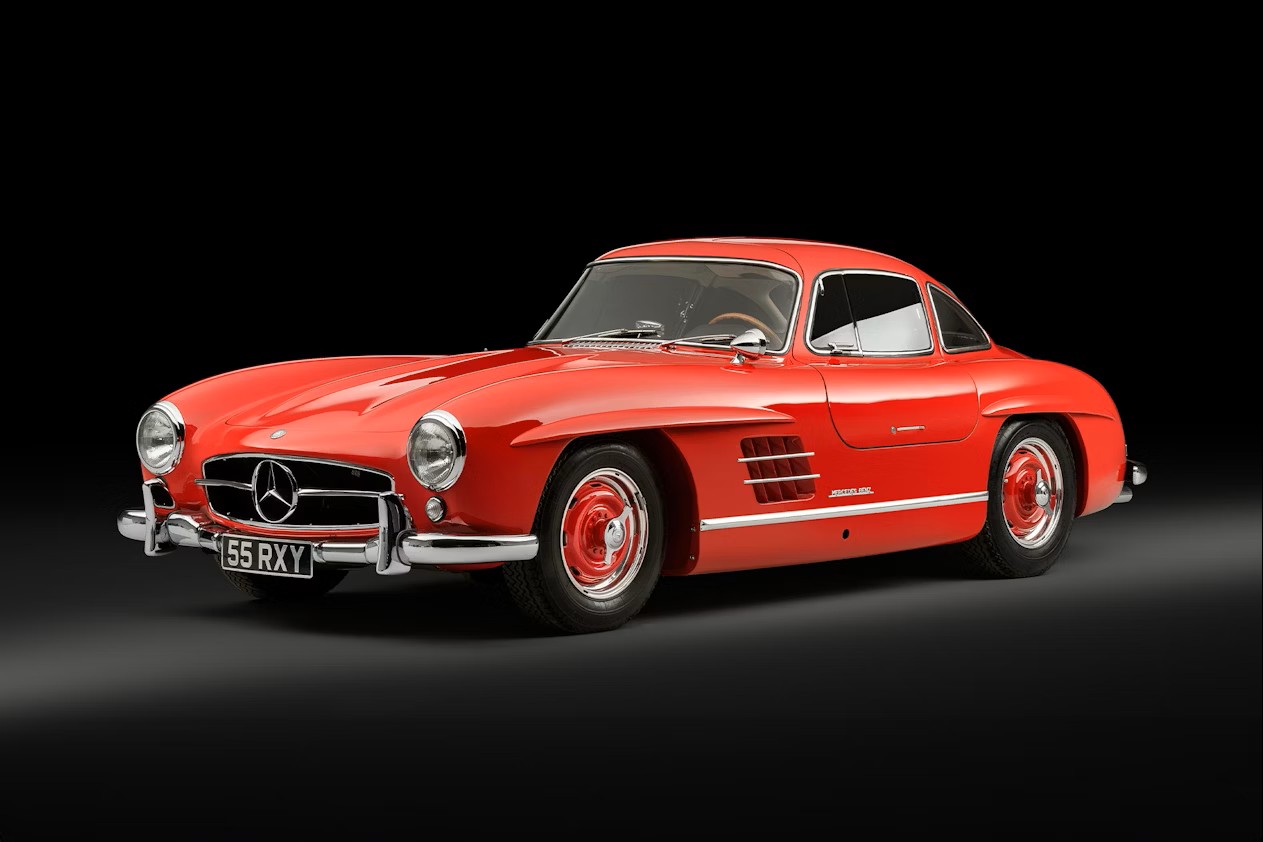
The direct mechanical fuel injection system was particularly innovative, adapted from aircraft technology and allowing for significantly improved performance compared to carbureted engines of that era.
This technology represented a quantum leap in automotive engineering, providing more precise fuel delivery and enhanced engine efficiency.
Constructed with meticulous attention to detail, the 300SL’s body was predominantly crafted from aluminum, significantly reducing the vehicle’s weight and enhancing its performance characteristics.
Each component was engineered with such precision that many original vehicles remain operational today, a testament to Mercedes-Benz’s commitment to quality.
Aesthetically, the Gullwing transcended mere transportation, becoming a rolling work of art. Its elegant lines, conceived by legendary designer Friedrich Geiger, seamlessly blended form and function.
Collectors and automotive historians consistently rate the 300SL among the most beautiful cars ever created, with pristine examples fetching millions at prestigious auctions.
2. Mercedes-Benz W108/W109 S-Class
The Mercedes-Benz W108 and W109 series, produced from 1965 to 1973, represent the pinnacle of luxury sedan engineering during the late 1960s.
These models were more than just automobiles; they were mobile statements of technological sophistication and refined elegance that set new standards for automotive comfort and durability.
Engineered with an unprecedented level of precision, the W108 and W109 series were built during an era when Mercedes-Benz prioritized long-term reliability over short-term cost-cutting.
The range included multiple engine options, from the smooth inline-six to the powerful V8 configurations, each designed to provide exceptional performance and longevity.
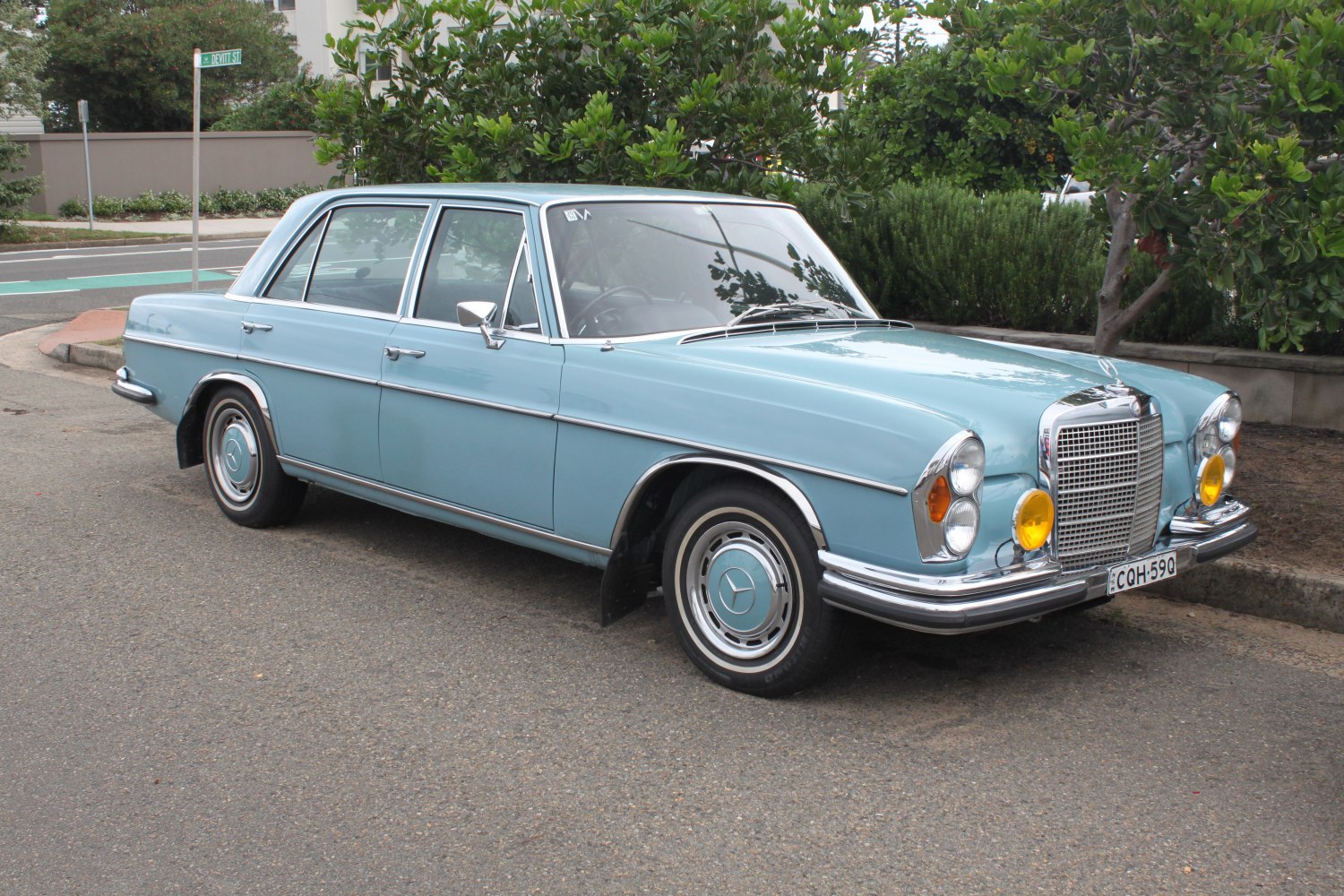
The flagship 300SEL 6.3, in particular, became legendary for its remarkable performance. Featuring a massive 6.3-liter V8 engine originally developed for the Mercedes 600 limousine, this model could accelerate from 0 to 60 mph in just 6.3 seconds a remarkable feat for a luxury sedan of its time.
This powerful drivetrain, combined with advanced suspension technology, created a driving experience that was both luxurious and exhilarating.
Technological innovations abounded in these models. They were among the first to feature comprehensive safety innovations like crumple zones, a revolutionary design concept that would become standard in automotive engineering.
The independent rear suspension, pneumatic self-leveling suspension, and disc brakes on all four wheels were far ahead of their contemporaries.
Craftsmanship was evident in every detail. The interior featured high-quality materials like genuine wood veneer, premium leather, and meticulously assembled components. Sound insulation was so effective that these vehicles provided an almost silent driving experience, a hallmark of true luxury.
Remarkably, many W108 and W109 models continue to operate flawlessly today. Their robust mechanical design, coupled with relatively simple electronics, means that with proper maintenance, these vehicles can easily surpass 500,000 miles.
Enthusiast communities and specialized mechanics ensure that these classics remain in pristine condition.
3. Mercedes-Benz 190SL
The Mercedes-Benz 190SL, produced from 1955 to 1963, emerged as the more accessible sibling to the legendary 300SL Gullwing, offering a perfect blend of style, performance, and affordability.
While not as powerful as its racing-derived counterpart, the 190SL became an icon of 1950s and early 1960s automotive design, embodying the era’s sophisticated European aesthetic.
Designed as a grand touring roadster, the 190SL was powered by a refined 1.9-liter inline-four engine producing 105 horsepower.
Though modest by today’s standards, this engine provided a smooth and consistent performance that made the car enjoyable to drive in various conditions.
Its lightweight construction and balanced handling made it a favorite among driving enthusiasts who appreciated finesse over raw power.
The car’s bodywork was a masterpiece of design, featuring smooth, elegant lines that captured the optimistic spirit of the post-war era.
Available as both a convertible and a hardtop, the 190SL was a versatile vehicle that appealed to professionals, artists, and socialites alike. Its proportions were so perfect that it became a symbol of European sophistication and style.
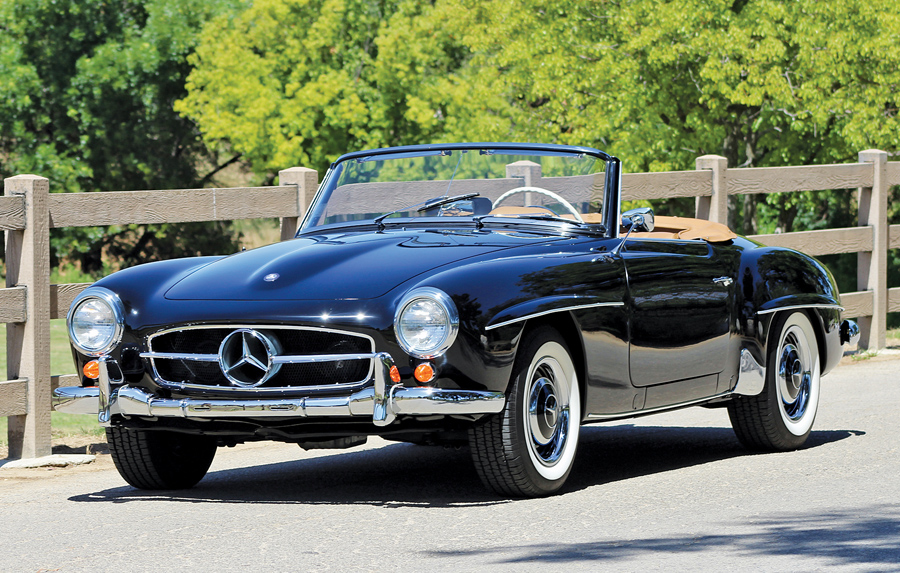
Construction quality was exceptional, with each body panel carefully formed and fitted. The extensive use of high-quality steel and meticulous welding techniques ensured that these vehicles could withstand decades of use.
Many 190SL models have survived in remarkable condition, a testament to Mercedes-Benz’s commitment to engineering excellence.
Mechanically, the 190SL was designed for reliability. Its simple yet robust four-cylinder engine could be easily maintained, and many original components are still available through specialist manufacturers.
The car’s suspension system, featuring double wishbones at the front and swing axles at the rear, provided a comfortable ride that was advanced for its time.
Collectors and enthusiasts continue to cherish the 190SL, with well-maintained examples commanding significant prices at international auctions.
Its timeless design and historical significance have raised it from a mere automobile to a genuine piece of automotive art.
4. Mercedes-Benz W123 Series
The Mercedes-Benz W123 series, produced from 1975 to 1986, is arguably the most durable and reliable automotive platform ever created.
These sedans, coupes, and wagons became synonymous with longevity, quality, and understated luxury, representing the absolute pinnacle of German engineering during the 1970s and early 1980s.
Available in multiple configurations including the iconic sedan, elegant coupe, and practical wagon the W123 series offered something for every discerning driver.
Engine options ranged from efficient four-cylinder diesel engines to smooth inline-six petrol variants, each designed with remarkable attention to mechanical durability.
The diesel models, in particular, achieved legendary status for their incredible reliability. Many W123 diesel vehicles have been documented to exceed 1 million miles with minimal major repairs, a testament to their robust engineering.
These engines were so well-designed that they became popular in regions with challenging driving conditions, from African deserts to South American mountain roads.
Structurally, the W123 was built to withstand extreme conditions. Its body was constructed using high-quality steel with comprehensive rust protection, a significant innovation for its time.
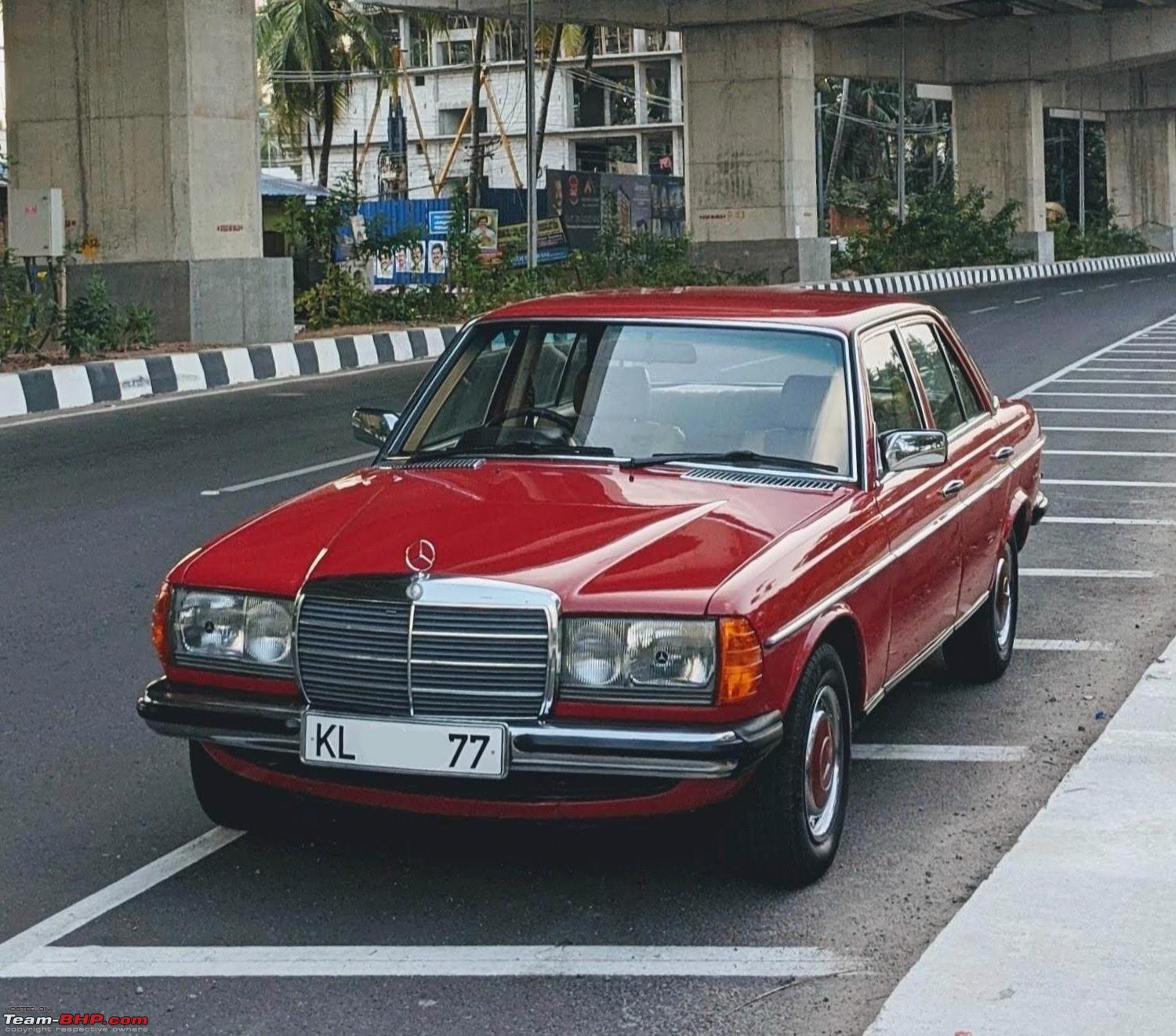
Every component was over-engineered, with tolerances and material selections that prioritized long-term performance over short-term cost reduction.
Safety was another hallmark of the W123 series. Mercedes-Benz incorporated numerous innovations like crumple zones, robust side-impact protection, and a rigid passenger cell that exceeded contemporary safety standards.
These design principles would later become standard in global automotive manufacturing. The interior reflected Mercedes-Benz’s commitment to quality. Despite being manufactured four decades ago, many W123 interiors remain in remarkably good condition. The use of premium materials, excellent craftsmanship, and timeless design meant that these vehicles aged gracefully.
Today, the W123 remains a highly sought-after classic. Enthusiast communities worldwide continue to maintain and restore these vehicles, proving that exceptional engineering transcends temporal boundaries.
Also Read: 12 Vehicles That Can Cross 400,000 Miles Without Major Repairs
5. Mercedes-Benz 600 (W100)
The Mercedes-Benz 600, or Großer Mercedes (Grand Mercedes), represents the absolute zenith of automotive luxury and engineering prowess from the 1960s and 1970s.
More than just a car, it was a mobile statement of power, wealth, and technological innovation that set unprecedented standards in the automotive world.
Produced from 1963 to 1981, the 600 was designed for heads of state, royalty, and the global elite. Its massive presence and extraordinary engineering made it the most expensive production car of its era, with a price tag that could purchase multiple luxury vehicles of the time.
Powered by a massive 6.3-liter V8 engine producing 250 horsepower, the 600 delivered exceptional performance despite its substantial weight.
The real technological marvel was its hydraulic system, which powered everything from windows and seats to the trunk and doors. This complex but ingenious system allowed for smooth, near-silent operation of virtually every mechanical function.
The vehicle’s construction was a masterpiece of German engineering. Each 600 required approximately 2,800 hours of labor to produce, compared to just 200 hours for a standard luxury car of the period. Every component was hand-fitted and meticulously crafted, ensuring unparalleled quality and durability.
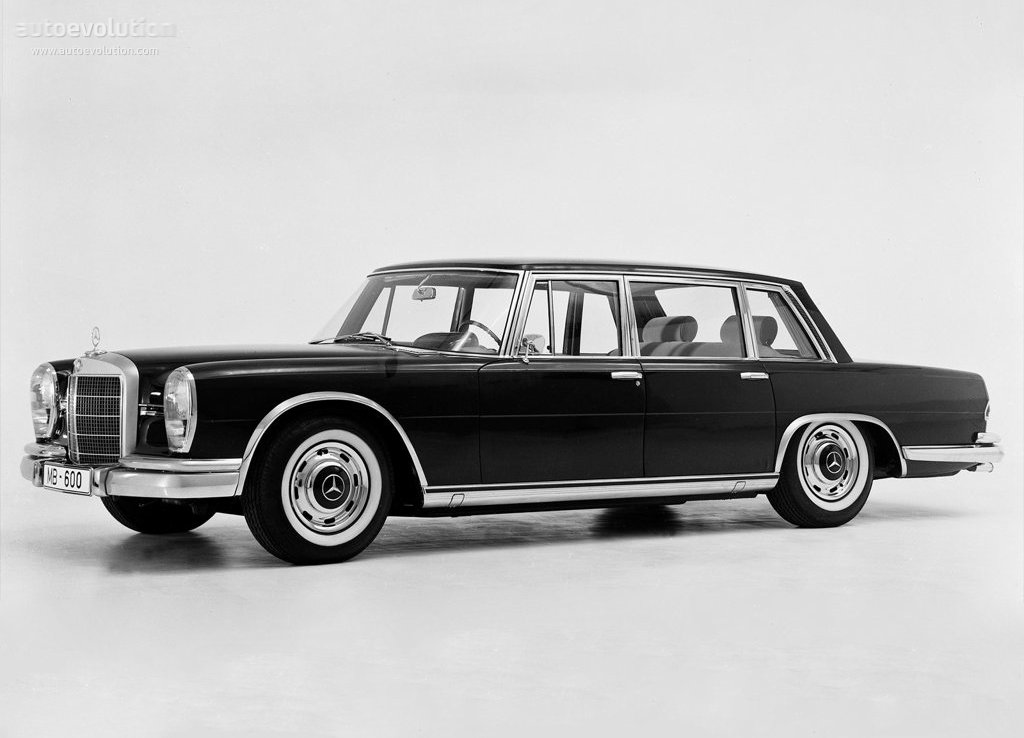
Available in multiple configurations including a standard wheelbase sedan, long-wheelbase limousine, and even a rare Landaulet version with a convertible rear section the 600 catered to the most discerning clientele.
Famous owners included heads of state like Fidel Castro, Pope Paul VI, and numerous international leaders, as well as celebrities such as Elvis Presley and John Lennon.
The hydraulic system, while complex, was a marvel of engineering. Developed using aerospace technology, it provided unprecedented comfort and functionality. Pressurized to 3,000 psi, the system could lift the entire car’s weight with minimal effort, powering everything from window mechanisms to seat adjustments.
Maintenance of these vehicles requires specialized knowledge, but dedicated restoration experts ensure that many 600 models remain in exceptional condition.
Original parts, while increasingly rare, are still manufactured or meticulously recreated by passionate specialists.
6. Mercedes-Benz 230SL Pagoda (W113)
The Mercedes-Benz 230SL, part of the W113 series produced from 1963 to 1971, is a quintessential example of automotive design that transcends time. Nicknamed the “Pagoda” due to its distinctive concave hardtop roof design, this model represents the perfect intersection of performance, luxury, and aesthetic elegance.
Designed by legendary engineer Paul Bracq, the 230SL was more than just a sports car it was a comprehensive redesign of Mercedes-Benz’s sports touring concept.
Its innovative design featured a unique removable hardtop with a distinctive concave shape, which not only provided exceptional structural rigidity but also created an instantly recognizable silhouette.
Mechanically, the 230SL was a marvel of engineering. Powered by a 2.3-liter inline-six engine producing 150 horsepower, it delivered smooth and consistent performance.
The car’s advanced suspension system, featuring independent front suspension and a sophisticated rear swing axle, provided exceptional handling characteristics that were far ahead of its contemporaries.
Safety was a paramount consideration in the Pagoda’s design. Mercedes-Benz incorporated numerous innovative features like crumple zones, a robust passenger cell, and strategically designed impact absorption areas.
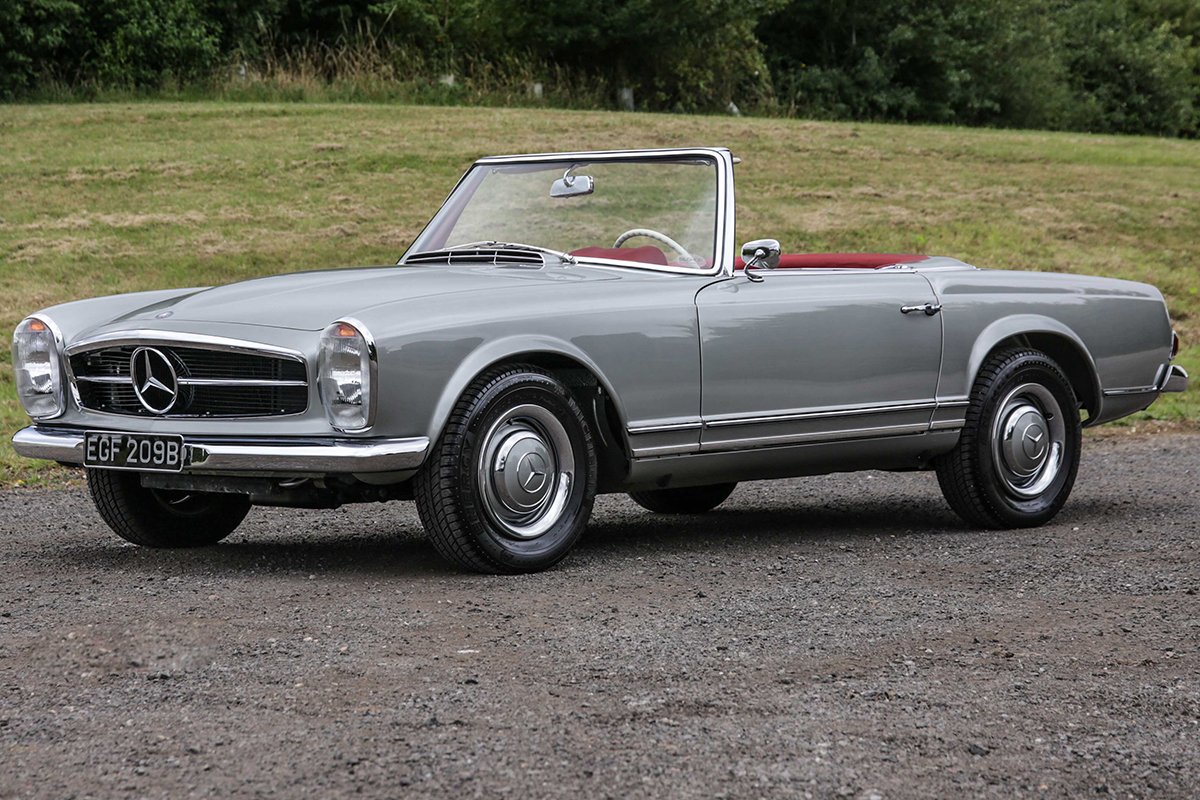
These principles would later become standard in global automotive safety regulations. The interior reflected Mercedes-Benz’s commitment to luxury and functionality.
High-quality leather, meticulously crafted wood veneer, and ergonomically designed controls created an environment of understated elegance. Every switch, knob, and instrument was designed with precision and durability in mind.
Produced in three variants the 230SL, 250SL, and 280SL the series offered options for different performance preferences. Each model maintained the core design philosophy of combining performance, comfort, and reliability.
Collectors and enthusiasts continue to cherish the Pagoda, with well-maintained examples commanding significant prices at international auctions.
Its timeless design and mechanical reliability have transformed it from a mere automobile into a genuine piece of automotive art.
7. Mercedes-Benz 300D (W115)
The Mercedes-Benz 300D from the W115 series represents the pinnacle of diesel automotive engineering during the 1970s.
Produced from 1968 to 1976, this model revolutionized perceptions about diesel engines, transforming them from noisy, agricultural powerplants to smooth, efficient, and remarkably durable driving machines.
At the heart of the 300D was a 3.0-liter inline-five diesel engine that became legendary for its reliability and efficiency.
Unlike contemporary diesel engines that were loud and crude, this Mercedes powerplant was refined, quiet, and capable of delivering consistent performance across extensive mileage. Many 300D models have been documented to exceed 500,000 miles with minimal major repairs.
The vehicle’s construction reflected Mercedes-Benz’s uncompromising approach to quality. Every component was over-engineered, with tolerances and material selections that prioritized long-term performance.
The body was constructed using high-quality steel with comprehensive rust protection, a significant innovation for its time.
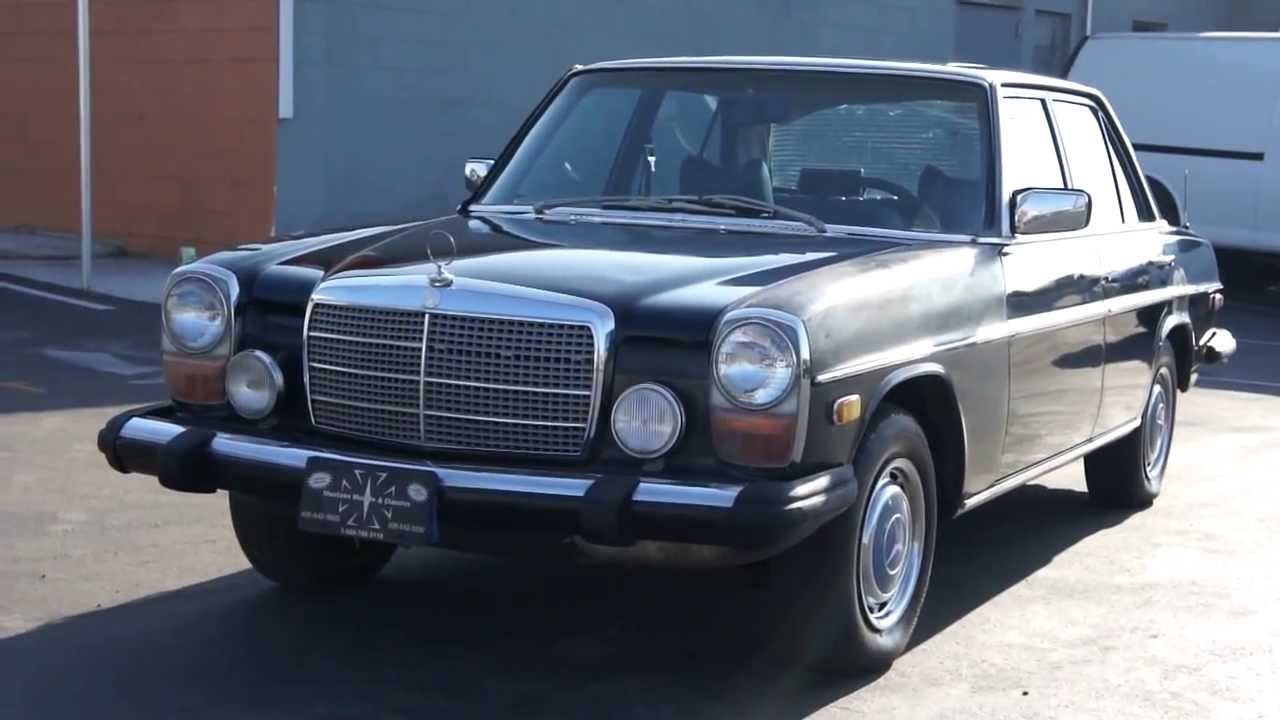
Technologically, the 300D was ahead of its contemporaries. Its indirect injection diesel engine was paired with advanced cooling systems and robust mechanical components that could withstand extreme conditions.
The car became particularly popular in regions with challenging environments, from African deserts to South American mountain roads.
Fuel efficiency was another remarkable characteristic. During an era of rising fuel prices, the 300D could achieve approximately 25-30 miles per gallon, exceptional performance for a large sedan of its time.
This efficiency, combined with mechanical durability, made it an economically sensible choice for both private owners and commercial fleets.
The interior maintained Mercedes-Benz’s reputation for luxury and comfort. Despite being a diesel sedan, the 300D offered a refined driving experience with comfortable seating, excellent sound insulation, and thoughtful ergonomic design. The use of premium materials ensured that interiors aged gracefully.
Today, the Mercedes-Benz 300D remains a highly sought-after classic. Enthusiast communities worldwide continue to maintain and restore these vehicles, proving that exceptional engineering transcends temporal boundaries.
8. Mercedes-Benz 450SL (R107)
The Mercedes-Benz 450SL, part of the R107 series produced from 1971 to 1989, stands as a definitive automotive icon of the 1970s and early 1980s.
This sports roadster perfectly embodied the era’s blend of performance, luxury, and timeless design, becoming one of the most successful Mercedes-Benz models in history.
Powered by a robust 4.5-liter V8 engine producing 190 horsepower, the 450SL delivered smooth and consistent performance. Its advanced mechanical design included sophisticated suspension systems that provided exceptional handling and comfort.
The car could accelerate from 0 to 60 mph in approximately 8.5 seconds, impressive for its era. Available in both convertible and hardtop configurations, the 450SL appealed to a wide range of drivers.
Its versatile design made it equally suitable for weekend drives, urban commuting, and long-distance touring. The removable hardtop was a particularly ingenious feature, allowing owners to transform the car’s character with minimal effort.
Mercedes-Benz’s commitment to safety was evident in every aspect of the 450SL’s design. Innovative features like reinforced side-impact protection, sophisticated brake systems, and a robust chassis structure set new standards for automotive safety during its production period.
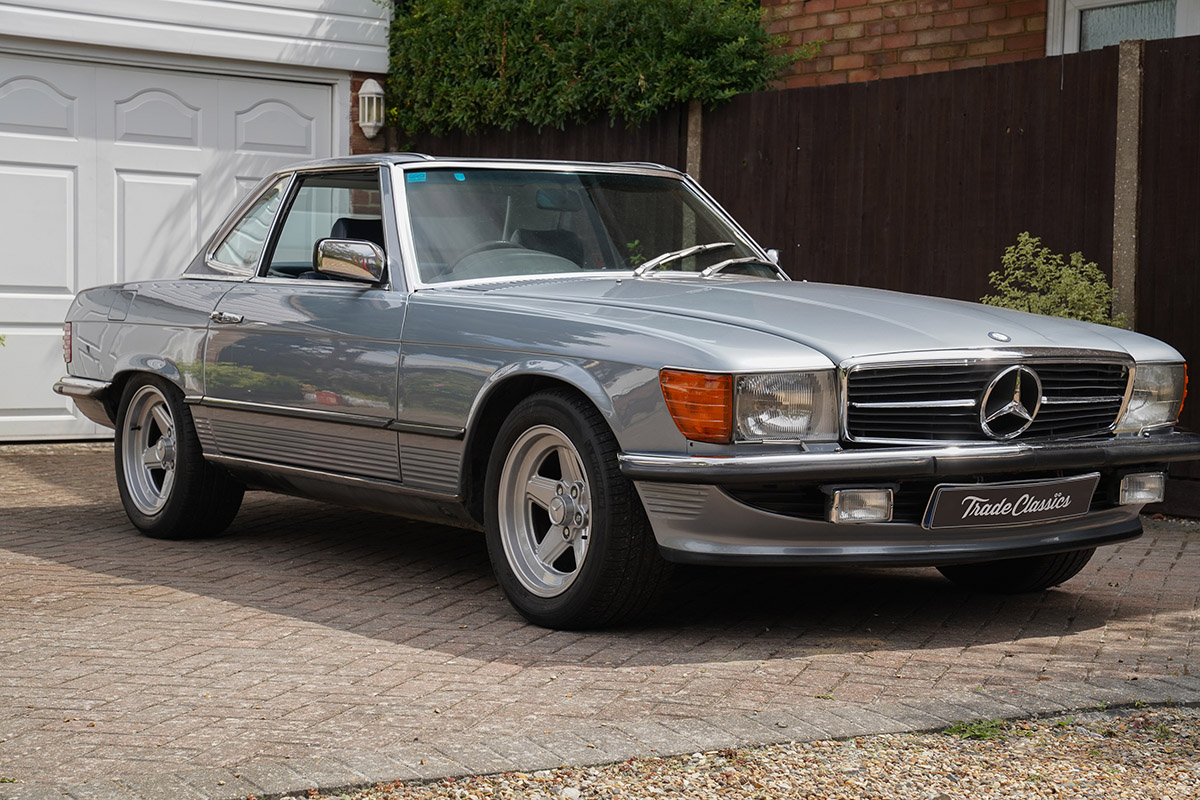
The interior reflected Mercedes-Benz’s uncompromising approach to luxury. High-quality leather, meticulously crafted wood trim, and ergonomically designed controls created an environment of understated elegance. Every component was designed for long-term durability and comfort.
Remarkably, many 450SL models continue to operate flawlessly today. Their robust mechanical design, coupled with relatively simple electronics, means that with proper maintenance, these vehicles can easily surpass 300,000 miles.
Enthusiast communities and specialized mechanics ensure that these classics remain in pristine condition.
Collectors and automotive enthusiasts continue to cherish the 450SL. Its timeless design, mechanical reliability, and historical significance have raised it from a mere automobile to a genuine automotive classic.
9. Mercedes-Benz 500SEC (C126)
The Mercedes-Benz 500SEC, part of the C126 SEC series produced from 1981 to 1991, represents the pinnacle of luxury grand touring coupes from the 1980s.
This remarkable vehicle combined exceptional performance, cutting-edge technology, and timeless design in a package that continues to fascinate automotive enthusiasts decades after its introduction.
Powered by a sophisticated 5.0-liter V8 engine producing 240 horsepower, the 500SEC delivered smooth and authoritative performance.
Its advanced mechanical design included innovative features like electronic fuel injection, sophisticated suspension systems, and aerodynamic body styling that was decades ahead of its time.
The vehicle’s design was a masterpiece of automotive engineering. Developed during an era of increasing focus on aerodynamics, the 500SEC featured a sleek, wind-cheating profile that reduced drag and improved fuel efficiency.
Its wide stance and muscular proportions conveyed a sense of power and sophistication that remains compelling today.
Mercedes-Benz’s commitment to safety was evident in every aspect of the 500SEC’s design. Innovative features like advanced crumple zones, comprehensive side-impact protection, and sophisticated brake systems set new standards for automotive safety during its production period.
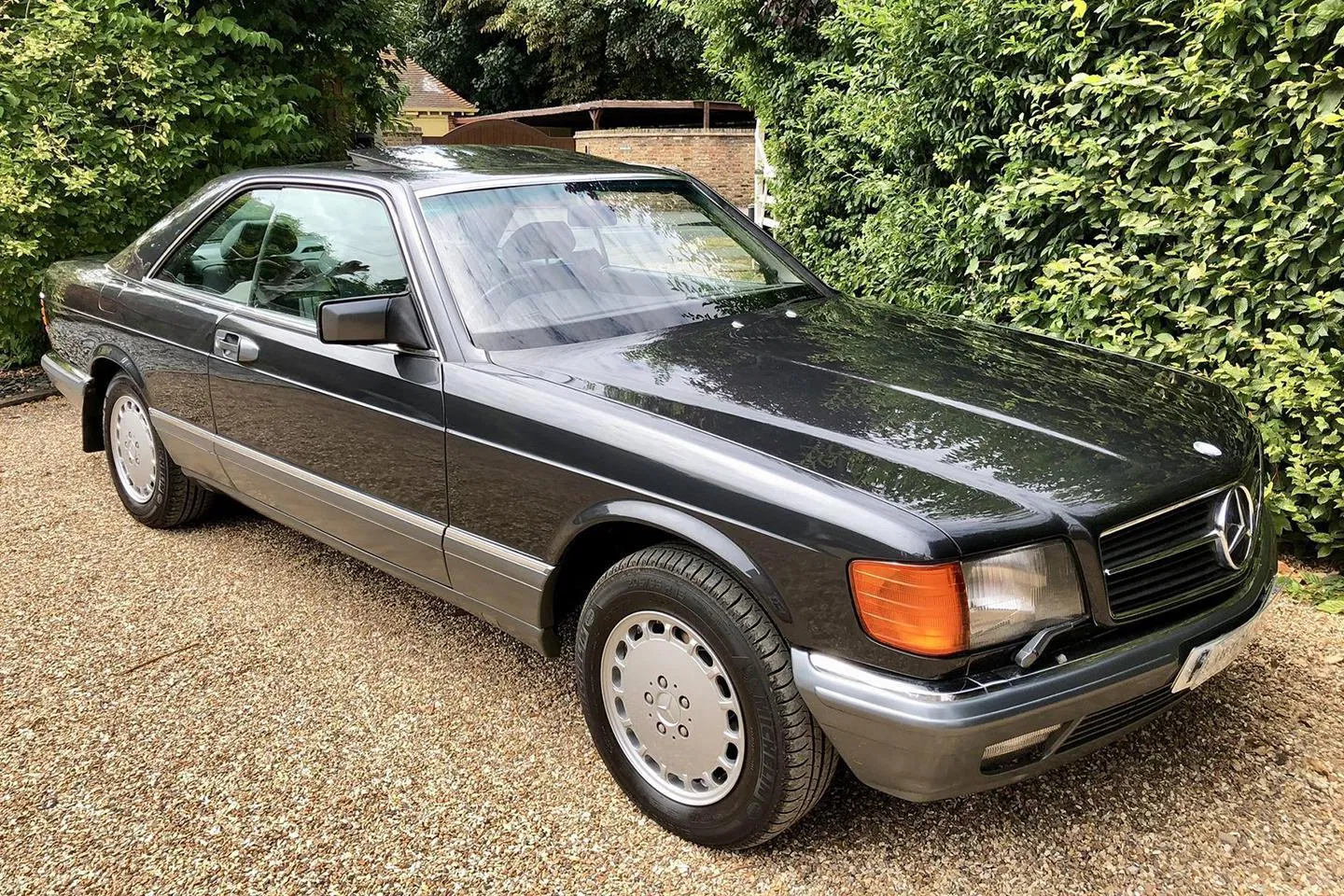
The interior was a testament to Mercedes-Benz’s uncompromising approach to luxury. High-quality leather, meticulously crafted wood trim, and advanced electronic features created an environment of unparalleled comfort and refinement. Every control and interface was designed with ergonomic precision.
Technological innovations abounded in the 500SEC. It was among the first vehicles to incorporate advanced electronic systems like electronic climate control, comprehensive onboard diagnostics, and sophisticated entertainment systems that were revolutionary for its time.
Many 500SEC models continue to operate with remarkable reliability. Their robust mechanical design and high-quality construction mean that well-maintained examples can easily surpass 250,000 miles. Enthusiast communities and specialized mechanics ensure these vehicles remain in exceptional condition.
10. Mercedes-Benz G-Class (W460)
The Mercedes-Benz G-Class, initially introduced as the W460 military and civilian model in 1979, represents an extraordinary testament to automotive durability and timeless design.
Originally developed as a military and utility vehicle, the G-Class has transcended its utilitarian origins to become a global luxury icon that maintains its original robust engineering.
Designed initially for military and industrial applications, the G-Class was created to be an exceptionally capable off-road vehicle. Its body-on-frame construction, rigid axles, and high ground clearance made it virtually unstoppable in the most challenging terrains.
This fundamental design philosophy remains largely unchanged even in modern iterations. Powered by a range of diesel and petrol engines, the original G-Class models were renowned for their mechanical simplicity and extraordinary durability.
Early diesel variants, particularly the 240GD and 300GD models, became legendary for their ability to operate in extreme conditions, from African deserts to Siberian tundras.
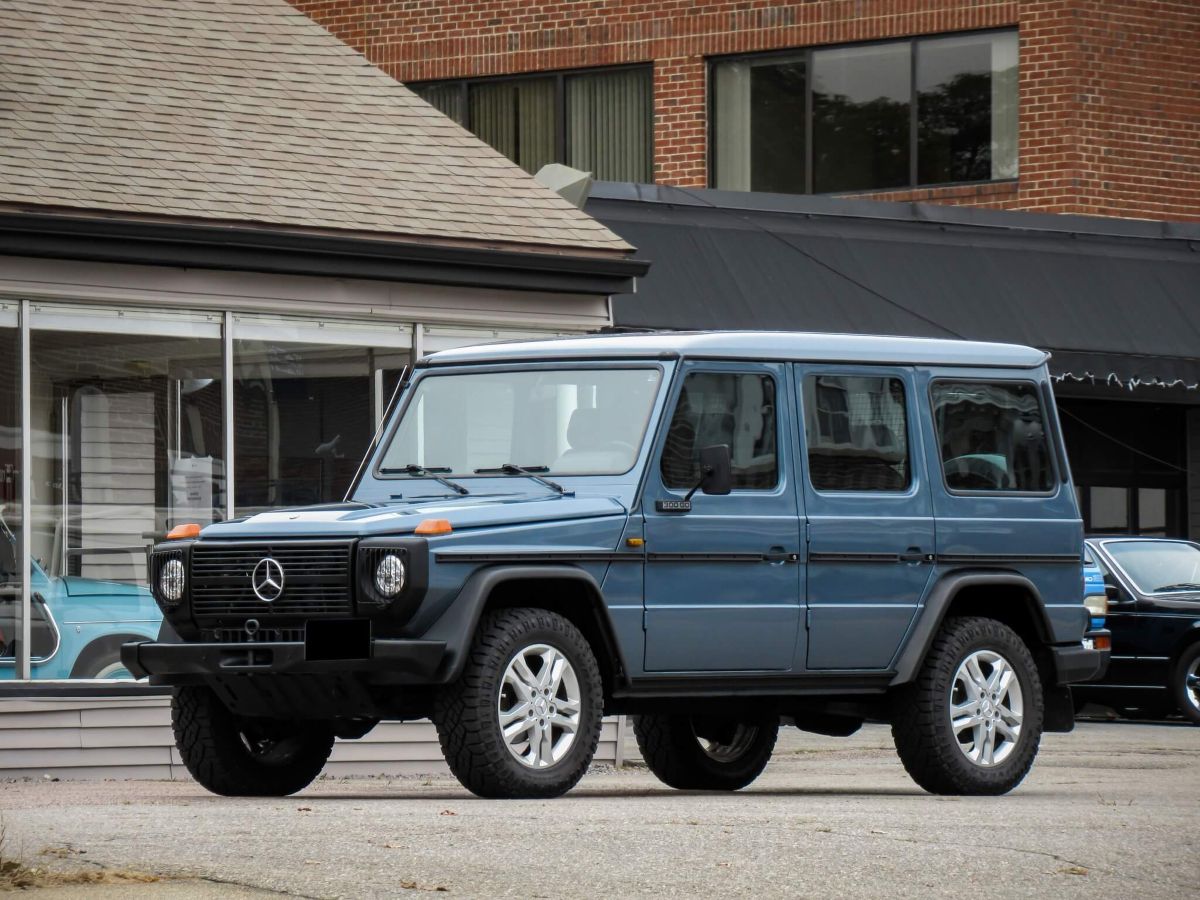
Mercedes-Benz’s engineering approach prioritized functionality over fashion. Every component was over-engineered, with tolerances and material selections that prioritized long-term performance and reliability.
The vehicle’s boxy, utilitarian design was a direct result of its functional requirements, creating an aesthetic that would become iconic.
The interior, while initially spartan, gradually evolved to incorporate luxury features. Later models introduced more comfortable seating, advanced sound insulation, and refined trim materials. However, the core design philosophy of robust functionality remained consistent throughout its evolution.
Remarkably, many early G-Class models continue to operate in challenging environments worldwide. Their mechanical simplicity, combined with Mercedes-Benz’s exceptional build quality, means that these vehicles can easily surpass 500,000 miles with proper maintenance.
From military vehicles to luxury status symbols, the G-Class has undergone a remarkable transformation while maintaining its core engineering principles. Enthusiast communities worldwide continue to restore, maintain, and celebrate these extraordinary machines.

